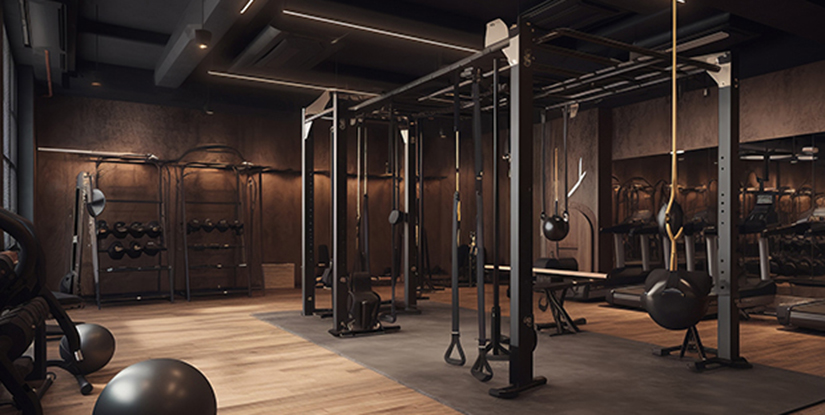Compact Fitness Equipment: Best Small-Space Home Gym Gear

Compact Fitness Equipment: Optimize Your Home Workouts
Compact fitness equipment delivers high-impact training within limited space, bridging the gap between commercial gyms and small apartments. For professionals, busy adults, and urban dwellers, choosing the right compact equipment ensures consistent progress, efficient storage, and long-term value. This guide explains types, selection criteria, space strategies, maintenance, and practical workouts tailored to compact gear.
Why Choose Compact Fitness Equipment
Compact equipment reduces clutter and lowers initial investment while preserving exercise variety. Benefits include portability, easy storage, reduced noise, and compatibility with multi-purpose rooms. Modern compact designs often sacrifice little in durability or functionality, offering adjustable resistance, foldable frames, and modular accessories suitable for strength, cardio, and mobility training.
Key Types of Compact Equipment
- Adjustable Dumbbells: Replace multiple fixed-weight sets with one compact unit. Ideal for progressive strength training and limited storage.
- Resistance Bands: Extremely portable, versatile for strength, mobility, and rehabilitation. They occupy minimal space and offer scalable resistance.
- Foldable Treadmills: Provide reliable cardio in a footprint small enough to store vertically or under beds.
- Compact Rowers: Low-impact full-body machines that often fold or stand upright when not in use.
- Suspension Trainers: Anchor to a door or beam to enable dozens of bodyweight movements without large equipment.
- Mini Exercise Bikes and Ellipticals: Designed for under-desk or seated cardio with low noise and small footprints.
- Vertical or Foldable Home Gyms: Multi-function units that consolidate cable systems, pulleys, and benches in compact frames.
Choosing the Right Compact Equipment
Select equipment based on training goals, available space, budget, and usability. Prioritize items that cover multiple movement patterns—pushing, pulling, hinging, squatting, and rotation. Consider the following criteria:
- Functionality: Does it support progressive overload and varied exercises?
- Footprint: Measure deployed and stored dimensions. Ensure clearance for safe movement.
- Durability: Choose trusted materials and realistic weight or resistance ratings.
- Noise Level: Important for apartments and shared spaces.
- Portability and Storage: Wheels, fold mechanisms, or vertical storage capability increase usability.
- Price vs. Value: Higher initial cost can be justified by longevity and multi-functionality.
Space-Saving Tips and Room Integration
Maximize your space by integrating equipment into daily life. Use vertical storage like wall racks or magnetized mounts for bands and small weights. Designate a multi-use corner with rubber flooring tiles that double as a play or work area when equipment is stowed. Consider furniture that conceals or doubles as storage for gear. Measure doorways and stairways before delivery.
Maintenance and Longevity
Regular maintenance extends equipment lifespan and preserves safety. Wipe down sweat-prone surfaces, inspect moving parts, and lubricate according to manufacturer guidelines. For foldable mechanisms and adjustments, periodically tighten bolts and verify locking pins. Store resistance bands away from sunlight and heat to prevent deterioration. Keep electronics charged and firmware updated for smart machines.
Effective Workouts With Compact Equipment
Compact equipment enables balanced programming. Example weekly plan using minimal gear:
- Day 1 – Strength (Adjustable Dumbbells): Squats, Romanian deadlifts, bent-over rows, overhead press, farmer carries.
- Day 2 – Cardio (Foldable Treadmill or Rower): 20–30 minutes interval training or steady-state endurance.
- Day 3 – Mobility and Core (Bands & Suspension): Band-assisted lunges, plank variations, pallof presses, face pulls.
- Day 4 – Full-Body Circuit (Combination): Circuit with bands, dumbbells, and bodyweight moves for metabolic conditioning.
Adjust volume and intensity to match goals. Emphasize technique, controlled tempo, and recovery to maximize results without large machines.
Buying and Warranty Considerations
Research warranties, return policies, and customer reviews. For higher-cost items such as treadmills or rowers, prioritize companies with accessible service centers and clear parts availability. Secondhand markets can offer value, but inspect wear points and test moving components. Look for certifications and materials transparency for safety assurance.
Conclusion
Compact fitness equipment is an effective solution for creating a consistent, well-rounded training regimen within limited space. With careful selection, smart storage, and regular maintenance, small-footprint gear can support long-term fitness goals without sacrificing performance or safety.
FAQs
- Q: Is compact equipment effective?
- A: Yes—when selected and programmed properly, it supports strength, cardio, and mobility effectively.
- Q: What is best for small apartments?
- A: Adjustable dumbbells, resistance bands, suspension trainers, and foldable treadmills are optimal.
- Q: How much space do I need?
- A: Most compact setups require a 6–8 ft clear area for full range of motion and safety.
- Q: Are foldable machines durable?
- A: Many are durable if used within rated limits and maintained per instructions.
- Q: Can resistance bands replace weights?
- A: Bands can substitute for many movements and complement weights for variety and rehab.
- Q: How often should compact gear be serviced?
- A: Inspect monthly, tighten fasteners quarterly, and follow manufacturer service intervals.
- Q: Is noise a major issue?
- A: Choose low-noise models, rubber flooring, and vibration isolators to reduce disturbance.
- Q: Are compact gyms expensive?
- A: They range widely; multi-function units offer cost efficiency compared to many single-purpose machines.
- Q: Can beginners use compact equipment safely?
- A: Yes—begin with basic movements, proper instruction, and incremental progression.

